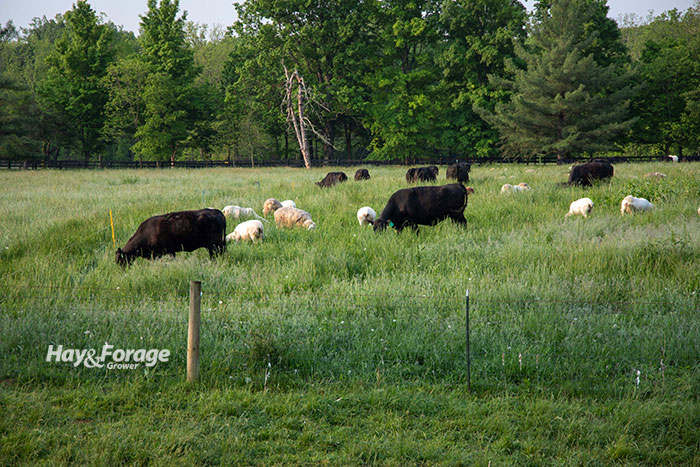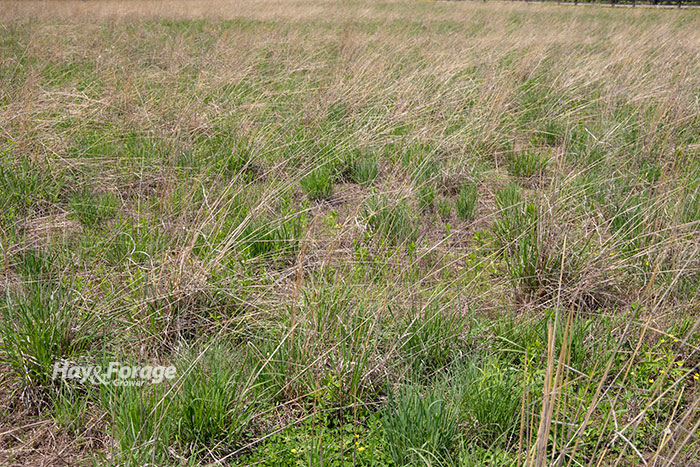Greenacres is not your average farm |
| By Mike Rankin, Managing Editor |
|
|
 Louis Nippert was a successful big-city lawyer by any measure, but he also had a love of the land. In 1949, he and his wife, Louise, decided to purchase a 47-acre farm that was just northeast of Cincinnati, Ohio, and known as Greenacres. It was the start of something much bigger. For nearly 40 years, Greenacres was operated as a “gentleman’s farm.” Nippert contacted every landowner around the property and made a handshake agreement to give him first right of refusal if they sold any of their land. This resulted in adding acres to the farm over a period of years, and now the Greenacres Indian Hill property totals 600 acres. In 1988, the Nipperts established the Greenacres Foundation with a goal of preserving the land for the education and enjoyment of future generations. Today, the farm sits in the middle of Indian Hill, an affluent Cincinnati suburb where the average household income approaches $200,000. The Greenacres Foundation has more recently purchased two more farms to expand their educational reach. One farm is in Brown County’s Lewis Township, southeast of Cincinnati, while the other is located in southeastern Indiana near Oldenburg. Greenacres is home to beef cattle, sheep, swine, poultry, and horses. The pasture-based livestock farms also produce vegetables and have managed woodlots. A farm store sells all of the products produced by Greenacres. Although livestock, vegetables, and trees abound on what is termed a “generative” production model, the farms’ primary commodities are research and education. Greenacres hosts 30,000 school-aged children per year through field trips and summer camps. The Foundation employs 100 people, many of whom are educators. Children are taught not just about agriculture, but also resource preservation and the arts. Adult education is also offered along with equine education, and Greenacres employs a host of summer college interns each year. Agricultural and environmental research is a large part of Greenacres Foundation’s mission. It employs its own research staff that investigates practical answers to topics such as soil health, food quality, and the environment. The research scientists also collaborate with universities on selected research projects. Finally, the Foundation helps fund independent outside research through an extensive grant program. Although the farms are not Certified Organic, the overall mantra is to use chemical inputs only when absolutely needed. For example, antibiotics might occasionally be used to save a sick cow or glyphosate applied to a field that is being renovated for new pasture establishment. Livestock based Beef and sheep graze together on most of the Greenacres’ pastures. Where feasible, they are followed by chickens. The farm also raises broiler chickens and turkeys on pasture. Pastures are routinely measured for biomass and a grazing wedge curve is developed to help dictate moves and ensure enough forage is available at current stocking densities. All of the beef raised and sold at Greenacres is grass fed and grass finished. During the winter, the beef animals receive high-quality hay that is bale grazed. Greenacres continuously strives to improve their Black Angus beef herd, introducing genetic traits that make cows finish better on grass. Rather than using large-framed cattle, the farm strives to breed more medium-framed animals that are adapted to a grass-based system. These cattle are prone to better health and maintain a high level of reproductive efficiency. Greenacres’ researchers study farming practices that make farm products with better nutritional properties. This collaborative effort between their farmers and scientists creates beef with superior flavor, texture, and nutritional properties, according to the Foundation’s website. New farm, new challenge The Greenacres Foundation purchased the Lewis Township farm in 2018. During many previous years, it had been farmed in continuous soybean and tobacco with high chemical and synthetic fertilizer inputs. Since the farm was purchased, Greenacres has been in the process of improving the health of the heavily compacted, low-carbon soil and converting the property into warm-season grass pastures using species such as indiangrass and big bluestem. Cover crops were originally used to help alleviate soil compaction. The University of Tennessee is collaborating on the warm-season grass project. In conjunction with The Ohio State University, a research project was also initiated to evaluate the most effective methods for establishing warm-season grasses. The three methods being studied are: 1. Herbicide application (imazapic) with no cover crop preplant, 2. Herbicide with one winter cover crop preplant, and 3. Organic with no herbicide and two cover crops preplant. Early results point to the need for the herbicide to aid in the establishment of the slow-growing warm-season grasses.  Greenacres is in the process of establishing native warm-season grasses to help provide reliable summer forage and offer nesting habitat for a declining population of bobwhite quail. A component of the farm transformation is to establish suitable habitat for bobwhite quail nesting. The species has been on a rapid decline in the region. Greenacres is also using prescribed burning to enhance warm-season grass productivity and bird-nesting habitat. The Greenacres Foundation fits the bill as an agricultural, environmental, educational, and research entity that is having a positive influence on its surrounding urban community. For more information, visit green-acres.org. |
